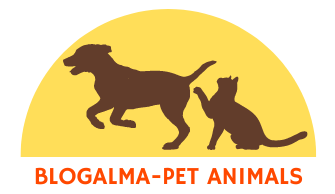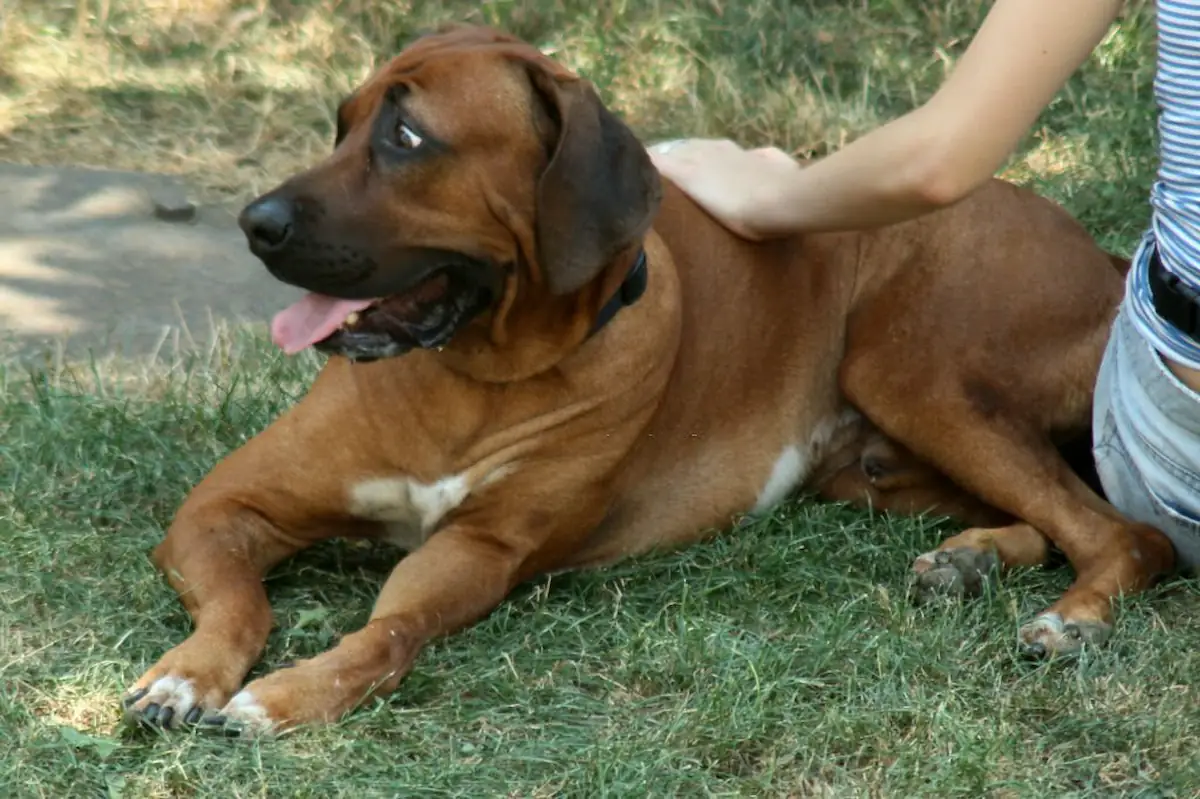The Tosa Inu, also known as the Japanese Mastiff, Tosa-Ken, and the Japanese Tosa is a giant breed of fighting dog that was originally developed in Japan in the mid-nineteenth century.
History of the Tosa-Inu
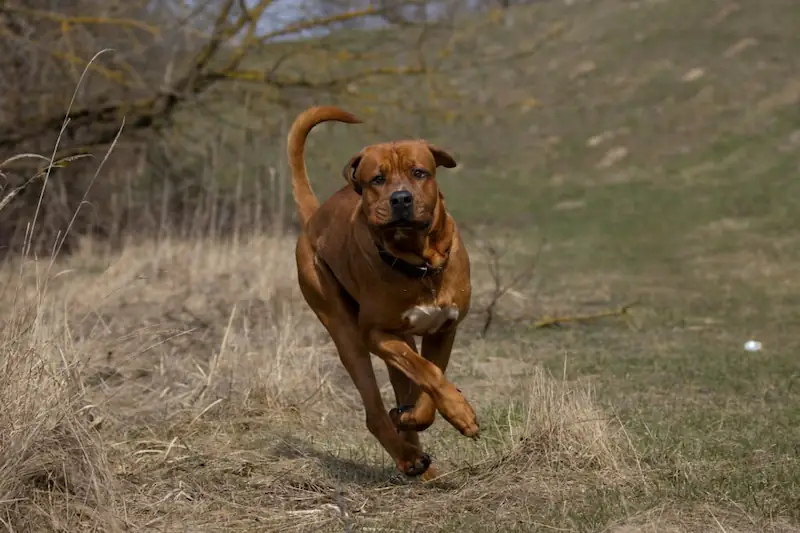
Japan has a long history of dogfighting, and the Tosa was specifically developed for dogfighting by crossing a local Japanese breed, known as the Kochi, native Shikoku fighting dogs, with breeds like the Mastiff, German Pointer, Bulldog, Great Dane, Bull Terrier, and St Bernard.
The Tosa is considered a national treasure in Japan, with this breed often referred to as the ‘Sumo wrestler of the dog world’. Even though dogfighting is now illegal in Japan, North America, and Europe, illegal dogfighting still continues in rural, remote regions of Japan where the Tosa is still used for fighting. Tournaments are often organized and supported by the Japanese mafia and the yakuza.
Dogs fighting in these events must be aggressive, fearless, and powerful, and the Tosa-Inu has all these traits, which is why it’s become the dog of choice for dogfighting. While animal rights groups continue campaigning to have this so-called ‘sport’ banned, Tosas are still being injured and/or killed in dog fighting.
The Tosa-Inu excels at dogfighting. In the last century, dogfighting rules demanded that dogs fought silently, and this is exactly what the Tosa did – he fought silently and relentlessly, without cowering. In Japan, Tosas victorious in the dogfighting ring are awarded celebrity status.
The most successful dogfighter is given the title of ‘Yokozuna’, a title that’s also used in the Sumo Wrestling world. Both the dog and its owner are decorated with braided rope and decorated cloth.
The Tosa was crossbred outside Japan with other giant breeds, including the Mastiff and Great Dane breeds, to produce a larger breed of dog, while Tosas bred in Japan remain true to the original type, at approximately half the size. In many jurisdictions, the Tosa breed is considered dangerous, while in Ireland and the UK, ownership is subject to license and very strictly controlled.
Related also: Info Guide Complete for the Bullmastiff Dog Breed
Ownership of a Tosa-Inu
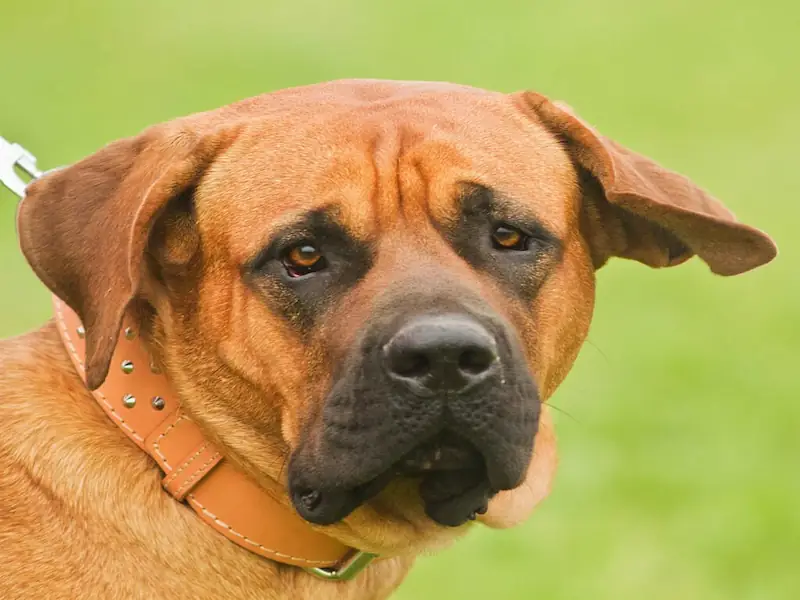
The Tosa-Inu is not a dog for the fainthearted, and it’s definitely not suitable for beginners or families with children or other pets. However, when placed in the right environment with a confident owner and firm discipline, a Tosa can become an easy-going, placid giant. He will need a firm hand and a dominant leader to continue reminding him that he is not the leader of the family.
Aggression towards other animals will be an ongoing problem, as will aggression towards strangers. Again, with proper training and socialization right from a small puppy, the Tosa can make a wonderful family companion. Your Tosa will make the ideal watch and guard dog for your family and your property.
There’s a huge sense of responsibility that comes with ownership of a Tosa, and there’s also a large financial cost. Tosas very quickly become bored and frustrated and require regular, intense exercise. They love activities like cart pulling and other types of weight pulling, which gives them the intense exercise they need, more so than simply running or lead walking.
Does the Tosa Inu Drool?
Because the Tosa-Inu is a Mastiff breed, he’s going to be a heavy drooler.
What is the Life Expectancy of a Tosa Inu?
While the Tosa is typically a healthy dog, their life expectancy is between 10 and 12 years.
Can a Tosa Inu be Kept Indoors?
The large size of the Tosa does not lend itself well to being an indoor-only dog. When outside alone, your Tosa must be contained within a strong, tall fence.
Appearance of the Tosa Inu
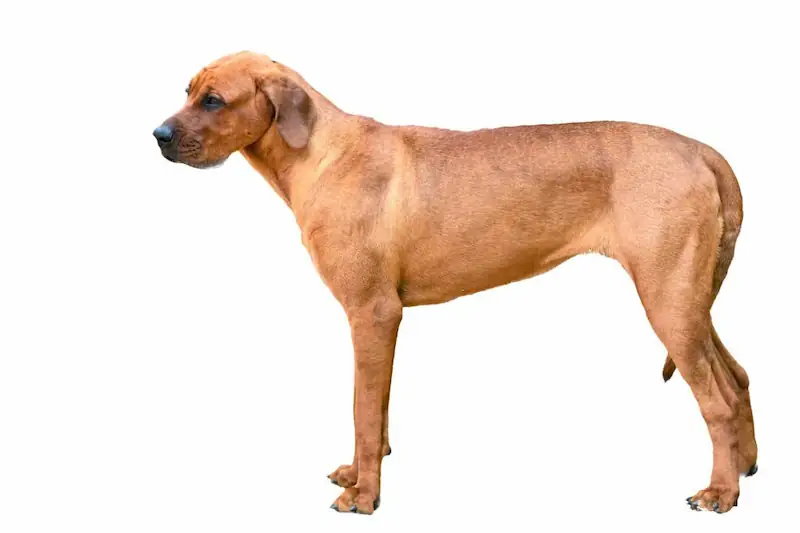
The Tosa-Inu is a stately, massive dog, with a large, broad head. He carries himself with great dignity, similar to the Great Dane. He has a squared-off, moderately long muzzle with a large black nose and powerful jaws. With teeth and jaws that are extremely well-developed, your Tosa should have a perfect scissor bite, with no overbite.
The ears are set high and are small and thin, hanging close to the side of his face. The eyes are quite small, and dark brown in color, and the Tosa usually has a serene expression on his face.
While thick at the root, his tail tapers to a point and reaches his hocks when he is relaxed. His well-padded feet have dark nails; his coat is hard, dense, and short. He may have small white markings on his feet and chest and often has a black facemask.
The Tosa-Inu is a heavily muscled dog, and this is especially noticeable on his neck which has a broad muscular arch. He will also have excessive skin around the neck, known as a dewlap, which is handy for any dogfighting breed – it gives the dog the ability to turn on his attacker even while he’s being held.
The high withers (the ridge between an animal’s shoulder blades) lead to a straight, wide back and loins, and he even has a massively muscled tail. He has a deep, moderately well-sprung chest, which results in a sharply tucked abdomen.
With well-angulated limbs, the Tosa-Inu has an athletic body that allows for maximum return on muscular effort. With tight paws and well-developed pads; heavy, strong boning, and his short coat of coarse, hard hair, this is an impressive and massively powerful dog. Coloring can be fawn, brindle, black, or red.
At the withers, the standard male Tosa-Inu stands between 24 and 26 inches (60 to 65 cm), while females average between 22 and 23 inches (55 to 58 cm). Depending on their familial characteristics and build, weight for both males and females ranges between 84 and 132 lbs. (38 to 60 kg)
Related also: Blue Great Dane: Info, Pictures, Interesting Facts & More
Tosa Inu’s Temperament and Character
The Tosa-Inu is extremely loyal to his owners. He’s a calm, laid-back dog, and when he’s sufficiently exercised he’s happy to spend a large portion of his day relaxing around the house or yard. However, your Tosa will be resentful and suspicious of all strangers and will be quick to respond to any perceived threat with aggression.
That’s why socialization from a very young age is key to keeping your Tosa calm. Failure to adequately socialize your dog can make his aggression very difficult to handle, resulting in a vicious circle whereby owners are forced to limit their dog’s contact with other humans to ensure no one is put at risk.
Does a Tosa Inu get along with other pets and small dogs?
Your Tosa was born with a high prey drive and loves nothing more than pursuing smaller pets (including other dogs) and wildlife. That’s why we strongly suggest that your Tosa be the only pet in your home.
Unless you’re a confident, experienced handler, the Tosa breed can become very assertive and will eventually become resentful of your weak efforts to control him. You, as his owner, must become the leader of the pack, and when this occurs your Tosa will recognize you as being in charge. A well-defined and obvious pack structure must be implemented from a very young age.
Are they trainable dogs?
While your Tosa is a very intelligent dog, he’s also very stubborn. Most of these dogs know exactly how they want to behave and it will require a lot of effort to make your Tosa tolerate his owner’s way of thinking. When you’ve got such a large, potentially dangerous breed of dog, it’s an absolute necessity that he excels at high levels of obedience and good behavior.
As his owner, it’s up to you to put in the work required to achieve these important goals. If necessary, seeking advice from a professional dog trainer can be invaluable, especially when the puppy is very small.
Socialization with other people should be your key priority for your Tosa puppy. You should invite your extended family and friends to spend time with your puppy, offering praise and treats and taking him for a walk, just to ensure he becomes comfortable interacting with strangers. Every interaction with other people must be a positive experience for the puppy.
It’s also important that you socialize your puppy with other dogs; however, you shouldn’t trust your Tosa with others of the same breed. Because this is such a massive dog, dog-to-dog interactions should be limited.
Games like tug-of-war and other competitive games should be avoided. Because of your dog’s strength and size, competition between a Tosa and its owner should not be encouraged.
Potential Health Issues
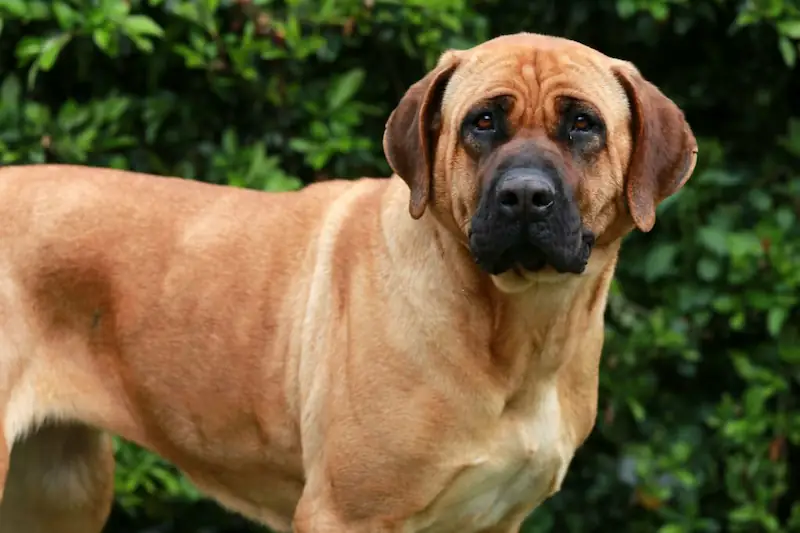
Unfortunately, due to the breeding carried out to produce this large, fierce, competitive dog, and the more recent cross-breeding in the West, your Tosa is a breed that comes with some significant health issues. These might include:
- Behavioral Disorders
Because of Tosa’s strong personality, he does have a tendency towards aggressive behavior. Unless trained and disciplined, it can be very difficult to manage this aggression. Unfortunately, it’s this very reason why many Tosa dogs are surrendered. These behavioral issues can be prevented by beginning socializing and training your puppy as soon as possible. It may not be possible to rehabilitate a large, aggressive Tosa.
- Allergic Skin Diseases
Allergens, like food ingredients and dust mites, can severely affect your Tosa. This breed is highly prone to allergic skin orders. Allergy symptoms include irritation and reddening of the face, ears, perineum, and paws. This can progress to hair loss, a secondary skin infection, and scabbing. It’s not easy to identify causative allergens; however, your veterinarian may suggest medication food trials, and skin scrapings.
- Hip Dysplasia
Hip dysplasia and elbow dysplasia share many of the same characteristics in that they may be noticed in younger dogs, with the ensuing joint problem ultimately ending up in osteoarthritis of the hip joint. There’s a strong genetic component with both hip and elbow dysplasia, and today’s breeders are using hip and elbow scoring schemes to have affected adults removed from their breeding stock. If you’re considering purchasing a Tosa-Inu you should ask to view scoring certificates for both parents.
- Elbow Dysplasia
Many large dog breeds are prone to developmental disorders of the elbow joints, and unfortunately, this also includes the Tosa. Abnormal growth can start as early as 5 months of age when the dog experiences pain and lameness in one or more areas of the joint. These giant dogs have a high pain threshold, which means actual signs of elbow dysplasia may not be picked up until adulthood, at which time irreversible arthritic change will probably already exist.
- Hyperkalaemia
Hyperkalaemia is typically a benign condition occurring in a number of large Japanese dog breeds. When it’s asymptomatic, Hyperkalaemia may only be identified through a routine blood screening. Blood potassium levels will be elevated, which can be aggravated by eating garlic or onions. When a dog is severely affected by Hyperkalaemia you’ll notice cardiac arrhythmias and lethargy in your dog; however, these are not very common.
- Hypothyroidism
A common cause of hair loss and weight gain in Tosa Inus is hypothyroidism, which is an underactive thyroid gland. Be aware that there can be an overlapping of hypothyroidism and dermatological symptoms. Blood tests will be taken to determine thyroid hormone levels when either of these issues is being investigated.
Related also: Dogo Argentino – Owner’s Guide to the Giant Argentinian Mastiff
Activity levels – How often should you exercise a Tosa Inu?
As mentioned previously, your Tosa will be quite happy to spend long periods of time relaxing in your home, but that doesn’t mean he doesn’t require a good serving of daily exercise.
You should allocate between 1 and 2 hours each day for walking or jogging, in addition to providing your dog with access to a secure outdoor yard or garden. Your Tosa will require more than walking on a lead – he’ll need vigorous exercise, like carrying a weighted doggy backpack when walking. These dogs love cart-pulling, and this strength training exercise will ensure your dog gets all the exercise he needs. The more exercise he has, the less likely he’ll
engage in aggressive and other unwanted behaviors.
Grooming
There’s not a lot of grooming required for your Tosa-Inu. Because he has a short, coarse coat, he’ll only require weekly brushing to stimulate the skin and keep his hair in good condition. And, of course, he’ll need the occasional bath to deodorize and remove any stubborn dirt.
Your Tosa is a light year-round shedder, and unfortunately, this breed does drool a lot. Some say they don’t drool as much as other Mastiffs, so that’s a bonus!
Your Tosa will have strong, dark nails, and it’s really important that you keep them trimmed to stop them from growing into the pads. You’ll need a sturdy pair of nail clippers for this job. You should introduce your pup to the habit of nail trimming while he’s still very young so he will continue accepting this procedure as he grows older.
Other Mastiffs
There are 20 very popular types of mastiff breeds around the world. We cover them all in detail!
